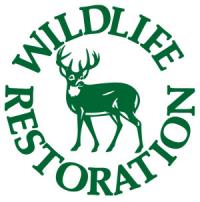
Wildlife Management Areas (WMAs) help conserve fish, wildlife and their habitat, while provide people with opportunities for fish and wildlife-based recreation.
Management Activities on WMAs
All WMAs are open to hunting, trapping, fishing, wildlife viewing and other wildlife-related outdoor activities.
 How are WMAs Funded?
How are WMAs Funded?
Management and administration of all WMAs is primarily funded through the sale of hunting and trapping licenses, and from the Federal Aid in Wildlife Restoration (Pittman-Robertson) Fund, in which excise taxes are paid on firearms, ammunition and archery equipment. The Vermont Fish & Wildlife Department uses this money for acquiring land for wildlife habitat and for restoring and managing wildlife. Public support of the Habitat Stamp helps fund habitat restoration and management on WMAs.
WMAs have also been purchased with assistance from the Vermont Duck Stamp Fund, Vermont Housing and Conservation Board, the Land and Water Conservation Fund, Ducks Unlimited, The North American Fish and Wildlife Foundation, and the North American Wetland Conservation Fund. Valuable assistance has been provided by conservation organizations such as The Nature Conservancy, The Vermont Land Trust, and the Conservation Fund.
Authorized and Prohibited Activities on WMAs
This rule formalizes existing and ongoing management in order to improve enforcement, clarify priority uses, set clear expectations for the use of these lands, and protect the safety of the public.
